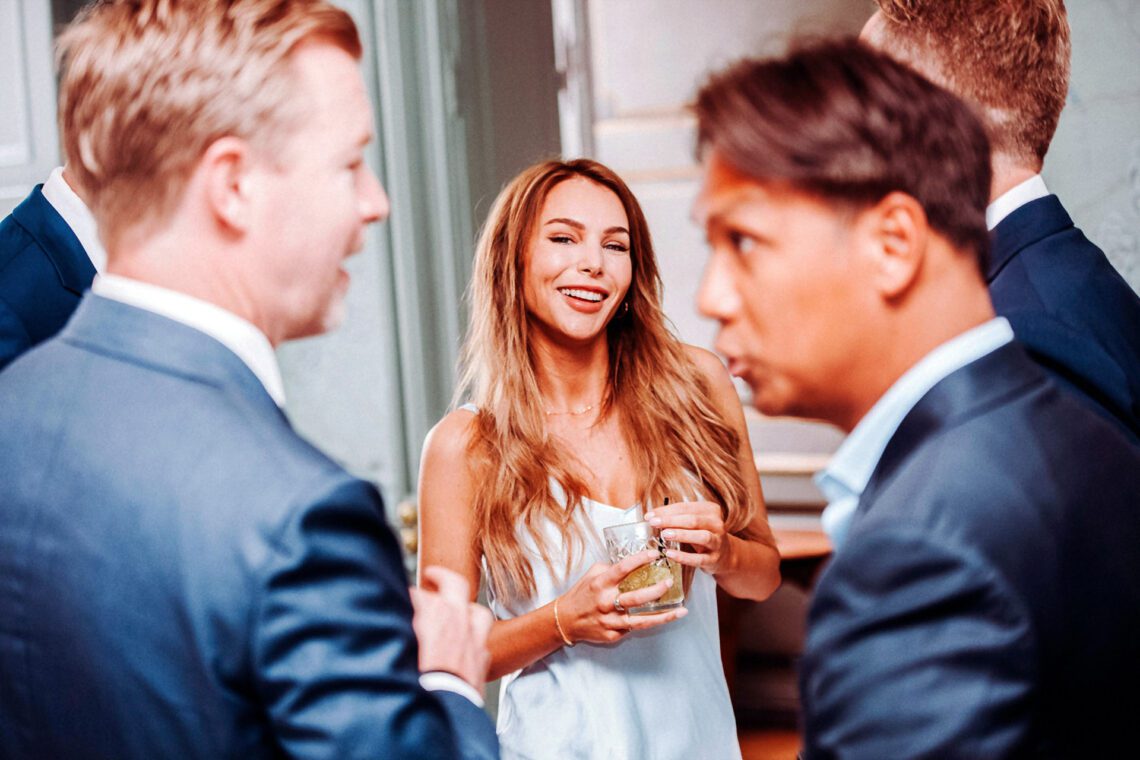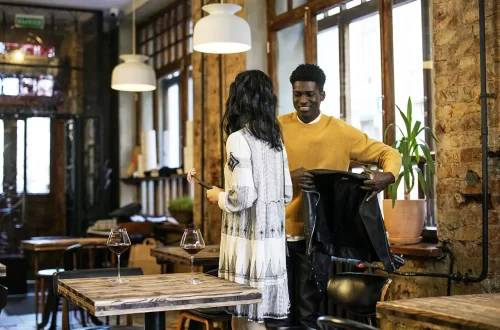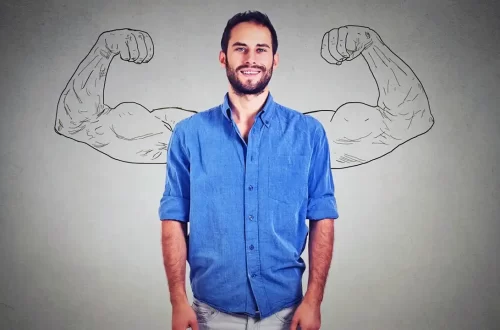
Unlock the Secrets: Mastering Social Cues for Better Connections
In both professional and social settings, reading social cues can make all the difference. It’s like having a secret map that helps you navigate through conversations, meetings, and interactions with ease. But don’t worry—understanding these unspoken signals isn’t some mystical skill only a select few have. With a bit of practice, anyone can learn to pick up on non-verbal communication such as body language, facial expressions, and tone of voice. Mastering social cues can help you connect with others more effectively, build stronger relationships, and avoid misunderstandings.
Mastering Social Cues: Understanding and Utilizing Non-Verbal Signals
Social cues are the subtle, often non-verbal signals people send out during interactions. These can include body language, facial expressions, tone of voice, and even the way someone positions themselves in a room. Mastering the art of reading these cues can help you connect with others more effectively, build stronger relationships, and avoid misunderstandings.
In professional settings, you can gauge how your ideas are being received by understanding social cues. This awareness helps you decide when to speak up and when to listen. In social situations, you can quickly figure out if someone is interested in what you’re saying, if they’re uncomfortable, or if they’re trying to communicate something indirectly.
The Basics of Social Cues
Body Language:
Body language is a powerful form of non-verbal communication that can reveal a lot about someone’s feelings and intentions. For example, crossed arms often indicate defensiveness, discomfort, or resistance, especially if combined with a stiff posture and minimal eye contact. On the other hand, if someone’s arms are open and relaxed, and they’re leaning slightly forward, it usually signals that they’re comfortable and engaged in the conversation.
Example: Imagine you’re in a meeting, pitching an idea to your team. If a colleague leans back in their chair with crossed arms and avoids eye contact, it might mean they’re skeptical or not on board with your idea. However, if they lean forward with their arms resting on the table, nodding as you speak, they’re likely interested and supportive.
Facial Expressions:
The face is often the most expressive part of the body, capable of conveying a wide range of emotions. A smile can indicate friendliness and openness, while a frown might suggest displeasure or confusion. It’s also important to watch for micro-expressions—brief, involuntary facial expressions that can reveal someone’s true feelings, even if they’re trying to hide them.
Example: During a conversation, you might notice someone’s eyes widen for just a fraction of a second when you mention a specific topic. This micro-expression could indicate surprise or interest, giving you a clue that this topic resonates with them, even if they don’t verbally express it.
Tone of Voice:
How you speak can drastically change the meaning of your words. Your tone of voice—pitch, volume, and inflection—conveys emotions and attitudes. For example, you might use a sarcastic tone to express humor or disbelief. A soft, hesitant tone often suggests uncertainty or discomfort.
Example: You ask a colleague if they’re okay with taking on an additional task, and they respond with a flat, monotone “Sure.” Even though the words are agreeable, the lack of enthusiasm in their tone might suggest reluctance or even annoyance. This is a cue for you to probe further or offer support.
Personal Space:
The amount of space someone keeps between themselves and others can be very telling. Personal space preferences vary widely depending on culture, personality, and the relationship between the individuals. Generally, standing closer can indicate familiarity, trust, or a desire for a more intimate connection, while maintaining a greater distance might suggest formality or discomfort.
Example: If you’re at a social event and someone you just met steps in closer while talking to you, it could mean they’re interested in building a connection. Conversely, if they take a step back, it might indicate they’re feeling uneasy or prefer to keep the interaction more casual and distant.
Common Social Cues and Their Meanings
Understanding social cues is key to navigating both professional and personal interactions. These unspoken signals reveal a lot about how someone feels. They show whether a person is engaged in a conversation or interested in something more. Here’s a combined list of common non-verbal cues, broken down by professional and social settings, with their typical meanings.
Social Cues in Professional Settings
Crossed Arms
Crossed arms can signal defensiveness, discomfort, or resistance. In a professional setting, it may indicate that the person is not fully on board with the discussion or feels closed off to new ideas.
Leaning Forward
Leaning forward generally indicates interest and engagement. If someone leans in during a meeting or presentation, they are likely focused on the topic and open to the discussion.
Avoiding Eye Contact
Avoiding eye contact might suggest nervousness, discomfort, or a lack of confidence. In a professional context, it could also indicate dishonesty or a reluctance to engage in the conversation.
Steepling Fingers (Hands in a triangle shape)
This gesture often conveys confidence and authority. It is frequently used by individuals who feel in control of the situation or wish to project a sense of leadership.
Fidgeting
Fidgeting, such as tapping a foot, playing with a pen, or shifting in a chair, can indicate impatience, anxiety, or discomfort. It might also suggest that the person is eager for the meeting or conversation to conclude.
Social Cues in Social Settings
Smiling
A genuine smile that reaches the eyes usually signals friendliness, warmth, and openness. In a social context, a smile combined with prolonged eye contact or a slight head tilt might also indicate romantic interest.
Mirroring Body Language
When someone mirrors your posture or gestures, it’s often a sign of rapport and connection. In social settings, if a woman mirrors your movements and maintains eye contact, it could be a subtle sign of attraction.
Playing With Hair
Twirling or lightly touching the hair is often a flirtatious gesture. This behavior can indicate that she is trying to draw attention to herself and may be feeling attracted or interested.
Light Touching
A gentle touch on the arm, shoulder, or back can signal romantic interest. In social settings, this kind of touch is often a way to create a physical connection and express attraction or affection.
Leaning In or Closing the Distance
If someone leans in closer during a conversation or finds ways to stand or sit near you, it might indicate a desire for a more intimate connection. This is often a sign of attraction, especially when paired with direct eye contact and smiling.
Prolonged Eye Contact
Holding eye contact for a few seconds longer than usual, especially with a smile, can be a sign of romantic interest. Frequent eye contact, paired with a shy look away or a smile, might suggest she’s interested in getting to know you better.
Laughing at Your Jokes
Laughing more than usual at your jokes can be a way to show interest and make you feel appreciated. If she’s engaging in a playful, lighthearted manner, it could be her way of flirting.
Standing or Sitting Close
When someone positions themselves close to you in a social environment, it can indicate comfort and attraction. If she consistently moves closer to you throughout the interaction, it might be a sign of interest beyond just casual conversation.
Glancing at Your Lips
If you notice her glancing at your lips during conversation, it could be a sign of romantic or sexual interest. This subtle cue often indicates that she’s considering a kiss or is otherwise attracted to you.
Interpreting these cues can really improve how you navigate both professional and social situations, but it’s worth remembering that non-verbal communication is unique to each person. What might be a sign of interest from one person could be just a habit for someone else.
Pay attention to see if these actions are specific to your interaction or if the person generally behaves this way with everyone. Observe how they interact with others to determine if you’re receiving special attention or if it’s just their usual behavior. Don’t worry—misreading cues is normal. The key is to stay aware and open to understanding the bigger picture of the interaction.
Practical Tips for Mastering Social Cues
Now that we’ve covered the basics, let’s dive into some practical tips that you can start using right away.
- Observe Before You Engage: In any social or professional setting, take a moment to observe the room before diving into a conversation. Notice how people are interacting with each other, who seems comfortable, and who seems on edge. This gives you a head start in understanding the dynamics at play.
- Mirror and Match: One effective way to build rapport and understand others is by subtly mirroring their body language. If someone is sitting back and relaxed, you might do the same. This can help create a sense of connection and make the other person feel more at ease.
- Ask Open-Ended Questions: If you’re unsure about a social cue, asking an open-ended question can provide more context. For example, if someone seems distracted, you might ask, “How are things going today?” This gives them an opportunity to share more about their state of mind.
- Practice Active Listening: Focus on what the other person is saying, not just their words, but their tone and body language too. Nod occasionally, make eye contact, and respond appropriately to show that you’re fully engaged in the conversation.
- Don’t Jump to Conclusions: It’s easy to misinterpret social cues if you’re not careful. If someone crosses their arms, it might not mean they’re closed off—they could just be cold. Always consider the context before making assumptions.
Activities to Master Social Cues
Like any other skill, reading social cues improves with practice. Here are some activities to help you sharpen your abilities:
1. People-watching:
Take some time to observe people in public spaces like cafes or parks. Without eavesdropping on their conversations, try to figure out what their body language and facial expressions might be communicating. Notice their posture, gestures, and tone of voice.
2. Role-playing:
Find a friend or colleague to practice with. Take turns playing out different scenarios—one of you acts out a specific emotion or social cue, and the other tries to guess what it is. This is a fun way to get more comfortable with recognizing subtle signals and improving your social skills.
3. Mindfulness Exercises:
Being present and aware of your surroundings can help you pick up on social cues more easily. Practice mindfulness by focusing on your breath, your environment, and the people around you. This can make you more attuned to the unspoken elements of non-verbal communication.
4. Review and Reflect:
After a social or professional interaction, take a few minutes to reflect on what happened. Did you pick up on any social cues? How did they influence the conversation? This reflection can help reinforce what you’ve learned and make you more aware in future interactions.
5. Video Analysis:
Watch videos of social interactions, such as interviews or movie scenes, and try to identify the social cues being used. Pay attention to emotional intelligence cues like eye contact, facial expressions, and body language. This can help you understand how these cues are used in different contexts.
By regularly practicing these activities, you’ll become more adept at reading social cues and enhancing your communication skills. Remember, the key to mastering social cues is consistent observation and reflection.
Expanding Your Understanding: Recommended Resources
Mastering social cues is a journey that goes beyond basic tips and observations. To truly develop this skill, it’s important to dive deeper into the psychology and practical applications of non-verbal communication. Fortunately, there are plenty of resources available to help you enhance your understanding. Here are some highly recommended books and online courses that dive deeper into social cues. They cover how to read them effectively in both professional and social settings. Whether you prefer reading or taking interactive courses, these resources will help you become more skilled at interpreting unspoken signals.
Books:

The Definitive Book of Body Language by Allan and Barbara Pease

What Every Body is Saying by Joe Navarro
Online Courses:
- Udemy: Udemy has a wide range of courses focused on communication, social skills, and body language. They often include practical exercises to reinforce learning.
Mastering Social Cues for Success
Mastering social cues might seem challenging at first. However, with these tips and a bit of practice, you’ll soon be able to navigate social and professional situations with confidence. Whether you’re trying to impress in a meeting or simply connect better with friends, understanding these unspoken signals will give you an edge. So, start observing, practicing, and reflecting—and watch as your interactions become more meaningful and effective. By honing your ability to read and respond to social cues, you’ll enhance your communication skills and build stronger, more rewarding relationships.





